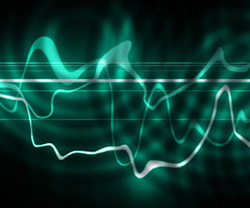
With Regard to Twisting:
1. Twist all balanced lines to control magnetic coupling.
2. When terminating twisted pair cable always keep the untwisted portion as short as possible. In an XLR connector consider connecting the hot and return, giving them a twist, and then connecting the shield.
3. Twisting the hot and return AC in power and relay control wires will reduce the effect of their fields on other circuits.
With Regard to Grounding:
1. All grounding must be done via excellent electrical connection between the ground reference and the item to be grounded. Grounding joints of dissimilar materials must be avoided.
2. Running ground wires in the most direct route with as few bends and loops as possible will minimize self-inductance and improve the ground.
3. Junction and terminal boxes, like conduit, should be grounded (usually to building steel). This is particularly true where they contain open splices.
4. If ground potentials exist between distant areas to be interconnected and cannot be removed by use of grounding techniques, consider using a transformer for isolation.
5. Ground the shell of all connectors in high-EMI areas. Great care is required if this is not to create ground loops.
6. In multiple-conductor cables, ground all unused lines at one end when in high-EMI areas or where crosstalk is a concern.
With Regard to Separation and Routing:
1. For audio purposes, cable types should be divided into the classes which were given in Table 12-7.
2. Always separate cables carrying different signal levels and types, particularly where they run for any distance parallel to each other. A minimum separation is 4 inches (100 mm).
3. Keep the hot and return wires in AC power cables as close together as possible. This minimizes the radiated fields. Use individual returns for each hot rather than a common return, and twist the pairs together.
4. Never transmit signals of differing characteristics (level and bandwidth) over the same multiple-conductor cable if crosstalk cannot be tolerated.
5. Cable routing should be utilized in all aspects of installation from conduit routing to assembly wiring with the goal of maximizing the distance between differing signal types.
6. Routing cables near a ground plane (grounded metal parts) will reduce the crosstalk due to electric fields of nearby cables.
7. Do not route audio cabling near main power lines, such as feeders, or switch gear even when contained in conduit. Consider using a localized magnetic barrier if necessary.
